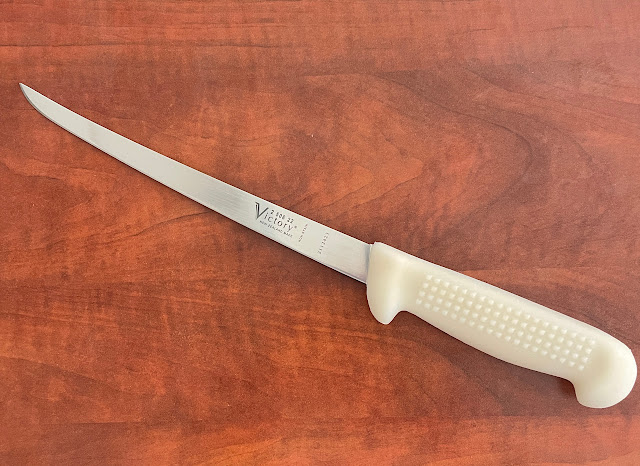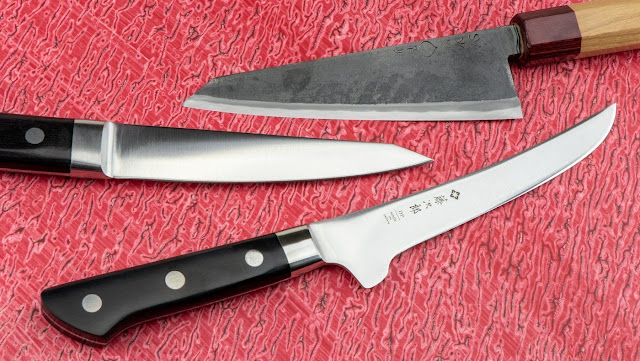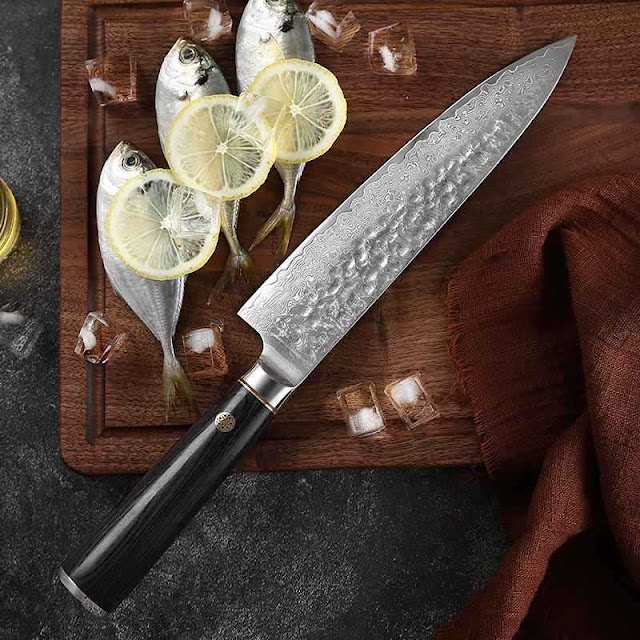Slice with Precision: Unveiling the Mastery of the Filleting Knife
In the realm of culinary arts, where precision and technique reign supreme, the filleting knife stands as a symbol of mastery and finesse. With its long, slender blade and razor-sharp edge, the filleting knife is designed to expertly remove bones and skin from fish, poultry, and other delicate proteins with precision and ease. Join us as we explore the artistry of the filleting knife, uncovering its history, uses, and the indispensable role it plays in the kitchen.
A Closer Look: The Anatomy of a Filleting Knife
At first glance, the filleting knife may appear similar to other kitchen knives, but its unique features set it apart as a specialized tool for delicate tasks. The blade of a filleting knife is typically long, thin, and flexible, allowing for precise maneuverability and intricate cuts. The sharp, tapered tip enables the knife to navigate tight spaces and make precise incisions, while the ergonomic handle provides a comfortable grip for extended use. Together, these elements make the filleting knife a versatile and indispensable tool for chefs and home cooks alike.
Versatility in Action: The Many Uses of the Filleting Knife
While its name may suggest a singular purpose, the filleting knife is actually a versatile tool with a wide range of applications in the kitchen. Here are just a few of the tasks that the filleting knife excels at:
Filleting Fish: As its name suggests, the filleting knife is ideal for filleting fish, allowing chefs to remove bones and skin with precision while preserving the integrity of the flesh.
Trimming Poultry: In addition to fish, the filleting knife is also useful for trimming poultry, such as removing skin and excess fat from chicken breasts or deboning a turkey.
Removing Membranes: The thin, flexible blade of the filleting knife makes it perfect for delicate tasks like removing membranes from cuts of meat or separating layers of fat from muscle tissue.
Slicing Meats: While its primary function is deboning and filleting, the filleting knife can also be used for slicing cooked meats, such as carving roast beef or slicing smoked salmon.
Mastering the Art of Filleting: Tips for Success
While the filleting knife may seem straightforward, mastering its use requires skill, practice, and attention to detail. Here are some tips for getting the most out of your filleting knife:
Choose the Right Knife: Select a filleting knife that suits your needs and preferences, taking into account factors like blade length, flexibility, and handle design.
Keep it Sharp: A sharp knife is essential for clean, precise cuts, so be sure to sharpen your filleting knife regularly to maintain its edge.
Practice Proper Technique: Learn the proper technique for using a filleting knife, including how to hold the knife, make precise cuts, and maneuver around bones and joints.
Take Your Time: Precision takes patience, so take your time and work slowly and methodically to achieve the best results.
In conclusion, the filletingknife is a versatile and indispensable tool that embodies the artistry and precision of the culinary world. Whether you're filleting fish, trimming poultry, or slicing meats, the filleting knife's long, flexible blade and razor-sharp edge make it the perfect tool for the job. With proper technique and practice, mastering the use of the filleting knife can elevate your culinary skills to new heights and open up a world of possibilities in the kitchen.
Join us in celebrating the art of the filleting knife and discovering the joy of precision in every slice.




Comments
Post a Comment